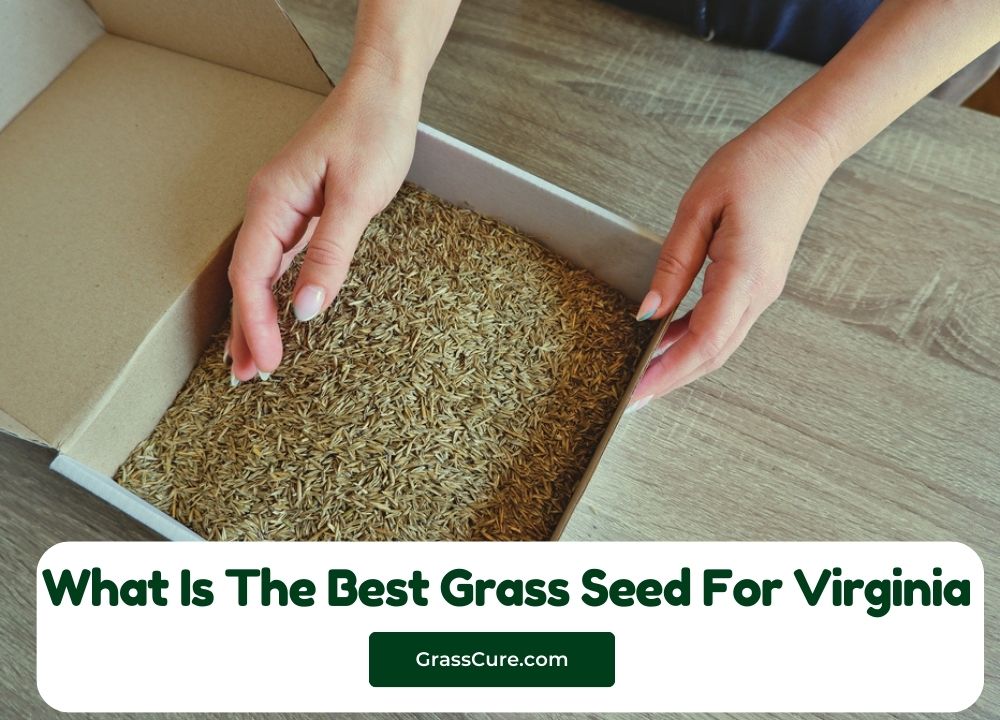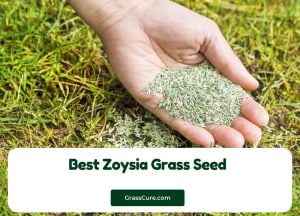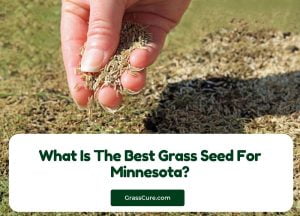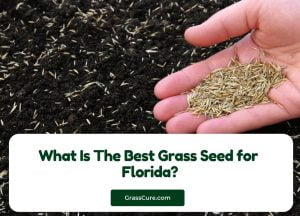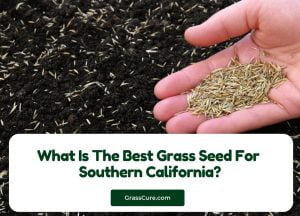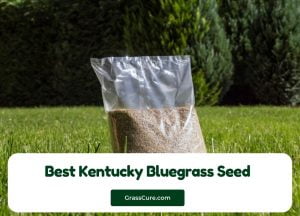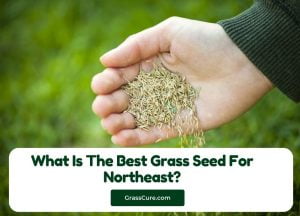where we delve into the lush world of Virginia’s lawns and landscapes. When it comes to achieving a picture-perfect lawn in the Old Dominion state, selecting the right grass seed is paramount. Virginia’s varying climates, from the coastal regions to the Appalachian foothills, require a special touch. In this comprehensive guide,
we’ll explore the best grass seed options for Virginia, considering factors like soil type, rainfall, and seasonal changes. Whether you’re striving for a golf course-worthy turf or simply a resilient, green yard for your home, we’ll help you make an informed choice. The best grass seed for Virginia is usually grown during the following cold and warm seasons. The grass grows well during these seasons below:
Contents
Cold season grass
In northern Virginia, cold season grasses sleep during the hottest summer months and the colder winter months. Therefore, it actively grows from late summer to early winter and early spring to early summer.
Fescue is one of the most common grass in Virginia and is excellent for shaded and shady areas. This plant has deep roots and can stay healthy in all soil conditions.
Ryegrass and Kentucky bluegrass are also common in northern Virginia. Ryegrass grows well in the highlands and usually thrives in mountainous areas. Kentucky grass is a well-maintained weed that requires full sunlight to grow but forms a dense, dense lawn.
Hot season
In southern Virginia, warm-season grasses can withstand less water, more sunlight, and different soil conditions.
Bermuda grass is probably the most common glass for the warm season in Virginia because it can withstand various soils and does not require maintenance.
Various grasses quickly formed a lawn and quickly spread over the open area. It can withstand prolonged droughts and heavy traffic.
Zoysia grass can also grow in the southern part of the state. Besides, Zoysia grass can withstand mild cold, making it suitable for areas where climate change is unpredictable.
Codicept can withstand shade and acidic soils, making it ideal for people living near the Virginia River.
Growing grass in Virginia
Without a doubt, making a lawn in Virginia can be difficult. Fortunately, there are some general tips on ensuring a beautiful green lawn all year round, regardless of the climate or soil conditions.
First, plant lawn seeds at the right time in your area. The northwestern part of the state should have grass plants in early spring or late fall. The southeastern part of the state is in early fall or late winter.
It is essential to test the soil because the soil can fluctuate greatly under most conditions. Consider using a professionally evaluated sample to understand pH. So, changes may be necessary before planting weed seeds.
Remove debris, weeds, and stones from the garden before planting. Then we plant grass in the space to ventilate and loosen the soil. If the soil requires a lot of phosphorus or lime (like most Virginia soils), the depth is 4 to 6 inches for the additive to penetrate completely.
If fertilization is necessary, apply up to two-thirds of the fertilizer and the rest to the soil before planting.
Fresh grass of the season:
Kentucky bluegrass
Kentucky bluegrass is a perennial and attractive species, widely used in many lawns, structures, parks, and playgrounds. With proper fertilization, this species will have medium-fine and medium-dark green leaves. It produces large underground trunks called resumes.
Compared to most other cold-season lawns, it has excellent grass-forming properties and high recyclability.
Kentucky bluegrass is resistant to cold, and abrasion and has moderate resistance to heat and drought. It grows best in spring and autumn and sleeps for long periods of high temperature and drought. In general, it can recover quickly from a dormant state due to the low temperature and adequate soil moisture.
Check Best Kentucky Bluegrass Seed
Perennial ryegrass
It is a perennial grass, dark green, fine and medium grain, used for lawns, parks, fields, golf courses, and sports fields.
This species produces mass-like growth without forming rhizomes or stems. Its recovery potential is not as strong as Kentucky bluegrass.
Perennial ryegrass germinates quickly (5-7 days) and settles quickly. It is very competitive with other lawns and covers small and lawns that incur damage.
Due to its aggressiveness, perennial ryegrass is generally not a right mix with other lawns by more than 20%. Similarly, it can be of use alone or in conjunction with Kentucky grass or Fescue.
Perennial ryegrass is resistant to abrasion and heat. It can only provide moderate, dry shade. Although this species can tolerate low temperatures, it is still vulnerable to damage from ice. Perennial ryegrass is very suitable for medium-high fertility soils with good drainage.
Check Best Perennial ryegrass Seed
High-quality fescues
High-quality fescues consist of narrow-leaved species of the genus Festuca. The most common types of sufficient grass nodes are crawling red nodes (Festuca Rubra), chewing nodes (Festuca), hard nodes (Festuca Longifolia), and sheep parties (Festuca ovina).
These species are widely in use for lawns, gardens, and parks. Ideal for low-maintenance lawns but not generally used for sports lawns. In cold (and well-maintained) climatic conditions, thin-footed cats use medium to dark green to produce a uniform and attractive support.
These grass grains are excellent and compatible with most fresh grass mixtures. In general, thin-skinned cats can withstand low fertility and low pH soils, dry soils, and cold conditions.
They are actually not suitable for hot and humid conditions: poorly drained soil; occupied areas such as sports fields and playgrounds. The proportion of nitrogen fertilizer is very high.
Like Kentucky bluegrass, skinny-footed cats go into a state of semi-sleep under prolonged, dry heat and recover quickly when the temperature drops and the soil moisture is sufficient.
High grass fescue is a perennial and durable plant that can form lawns suitable for lawns, fields, parks, playgrounds, and playgrounds.
It is generally used on occasions with low maintenance costs, such as work areas, road centers, tracks, and fairs.
Many new and improved varieties are thinner, denser, and darker than the light green types with a thicker texture, such as “Kentucky 31” and “Alta.”
Major festivals are considered by many to be incompatible with Kentucky’s exquisite dark green bluegrass, perennial ryegrass, and stunning parties. High Fescue tends to form coarse-grained bunches on other uniform substrates and can be uncomfortable when mixed with fine-grained grass.
FAQs:
What are the key factors to consider when choosing grass seed for Virginia?
Several factors come into play, including Virginia’s climate, soil type, and local weather conditions. Cool-season grasses like Kentucky bluegrass, tall fescue, and perennial ryegrass tend to perform well in most areas, but the specific grass seed you need may vary based on your location and personal preferences.
Is it necessary to use a specific grass seed mix for different regions within Virginia?
It’s highly recommended. Virginia’s diverse climate zones, from the coast to the mountains, mean that grass seed varieties may perform differently. Consult with local nurseries or extension services for region-specific recommendations to ensure the best results.
How do I know if my lawn has the right pH level for the chosen grass seed?
You can test your soil’s pH level with a home testing kit or have it analyzed by a local agricultural extension office. Based on the results, you can amend your soil with lime to increase pH or sulfur to lower it, creating the ideal conditions for your chosen grass seed.
What is the best time of year to sow grass seed in Virginia?
Fall, particularly September through early November, is often the best time to plant grass seed in Virginia. The soil is warm, and there’s typically more moisture, which promotes good seed germination and root development. Spring is a second option, but fall is generally preferred.
What maintenance practices are important for a thriving lawn in Virginia?
Regular lawn care practices such as mowing at the appropriate height, watering as needed, and providing essential nutrients through fertilization are crucial. Additionally, pest and weed control should be part of your lawn maintenance routine to keep your grass healthy and resilient throughout the year.
Conclusion
Virginia does not have the best grass for the whole state due to its many different soils and climates. So if you actually live in the north, think about the cold season. The southern region is fortunate to have warm-season grass.

